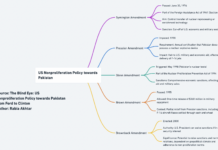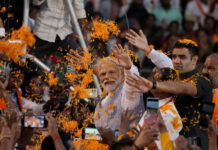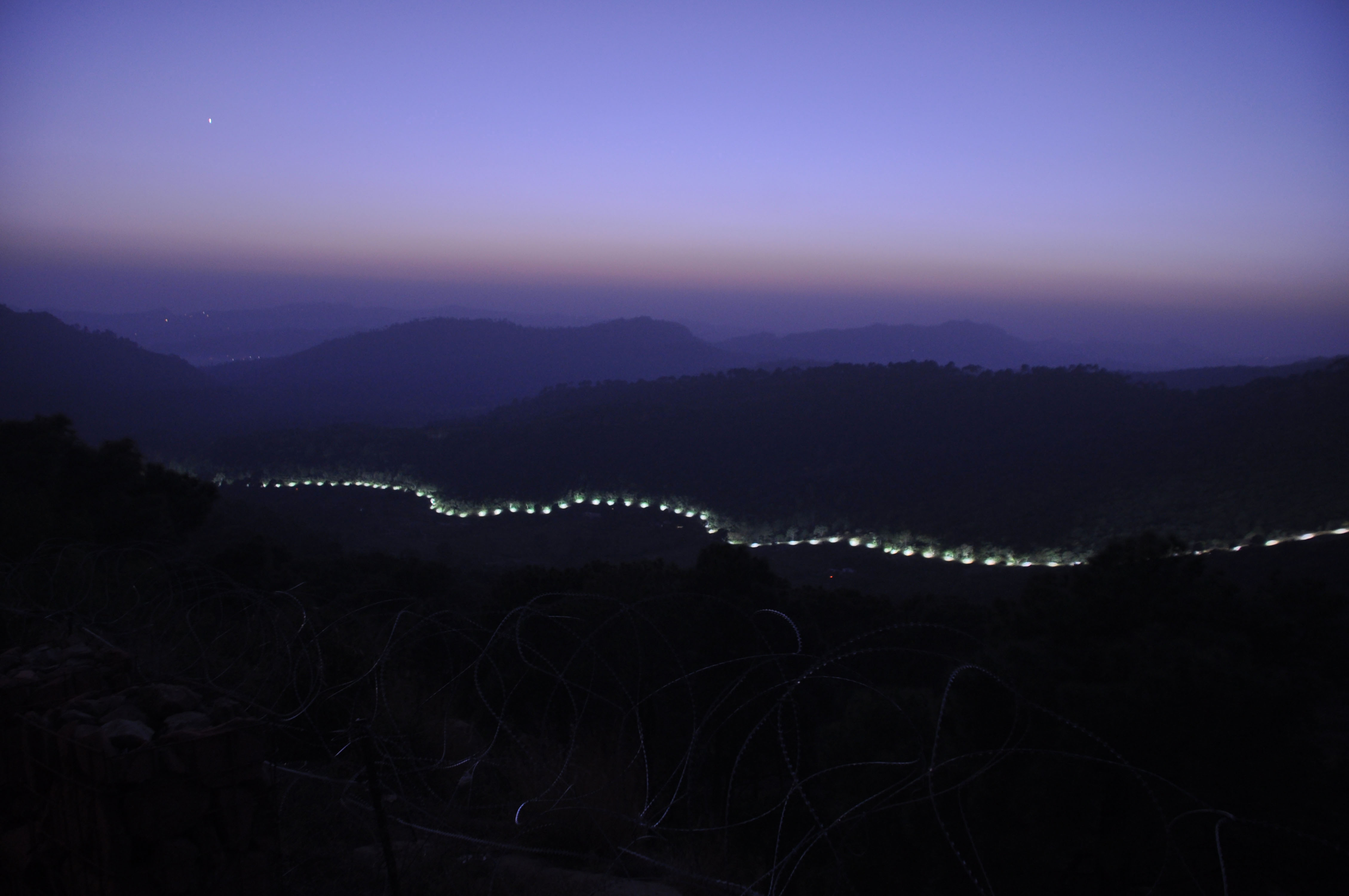Syed Ali Zia Jaffery
Conflict has been one of the most recurrent themes in history. It is apt to assert that war has been an oft-used instrument by actors to muster power and ensure survival. In his Magnum Opus entitled “On War”, the celebrated military theorist Carl von Clausewitz referred to war as an “act of violence to compel our opponent to fulfill our will”. This book acts as a complete guide and a must-read for practitioners, academics and theorists alike. Certainly, war is devastating and hence is used as a policy-option to counter current and potential threats to the state.
Wars and conflicts are intertwined; acrimony is festered by using war as an instrument of state policy. This is not merely an assertion but a reality in the conduct of Indo-Pak ties over the last 7 decades. Both India and Pakistan were physically dagger drown; all-out wars and some epic battles have prominently featured in the engagements between the two. Enemies imposing war on each other is not anomaly; it is a given and a constant occurrence. War always has some casus belli. In the volatile South Asian theatre, the reasons of animosity are deep-seated and known to one and all. But a war between a revisionist and a status-quo state, is what defines the Indo-Pak rivalry.
The past 7 decades have been spent in a conflictual environment and seemingly the future doesn’t look one where this ever-simmering dispute will fizzle out. There are many reasons to believe that the temperatures may rise in the region. One of them is India’s will and the resolve to “teach Pakistan a lesson”. Besides, now Indo-Pak rivalry will be embedded in the new “Great Game” in the region, something that merits a detailed analysis in its own right.
India considers Pakistan a rogue state that is allegedly involved in exporting terrorism. India assuredly asserts that Pakistan perpetrates terrorist attacks in India, including the dastardly 26/11 bloodbath in Mumbai. Thus, India wants to compel and deter Pakistan. Despite being courted by Washington, Delhi is not mollified with Washington’s unwillingness and inability to pull the plug and go for the kill viz Pakistan.
However, there is a great deal of skepticism regarding India’s ability to achieve deterrence and compellence. Can its decade-old proactive war doctrine, casually known as Cold Start Doctrine coerce Pakistan or is it a mere military plan that does not take into account a pertinent military adage: “No plan survives contact with the enemy”.
The even-otherwise scant military options that India has in its arsenal, if carried through have the propensity to escalate the conflict to the highest end of the conflict spectrum. The idea is to use a credible military option to coax Pakistan to change its course: an important cog to actualize Compellence. The Indian political and military leaderships have enunciated their intent and determination to launch airstrikes and invoke the Cold Start Doctrine.
There were two important reasons that forced Indian strategic planners to overhaul the Sundarji Doctrine and move towards a proactive doctrine of limited war: one of them was the overt nuclearization in South Asia and the other was the abysmally slow mobilization during Operation Parakaram. Much to the chagrin of India, the slow mobilization in the operation launched after the Delhi attacks allowed not only Pakistan to counter mobilize but also invoke third-party intervention. The belief that permeated in the Indian high command was that Pakistan was let off the hook.
Operation Parakaram was primarily initiated to punish Pakistan before foreign mediatory efforts could save the day for Pakistan. This hinged upon India’s conviction that Pakistan, indeed, was the force behind the brazen attacks on the Indian Parliament. However, the mobilization was too slow to have attained the military-politico objectives of Operation Parakaram. Thus, the Cold Start Doctrine was unveiled as back as 2004.
Reliant upon alacrity and mobility, Cold Start calls for reshuffling the old Holding and Strike corps. The former would create shallow bridgeheads into Pakistani territory. It would be followed by Integrated Battle Groups (IBGs) attacking along various axes to further penetrate inside Pakistan. Thereafter, bolstered by air support, the 3-strike corps would apply massive firepower. In order to avoid a nuclear retaliation, forces will bite and hold territory up to 80 kilometers inside Pakistan.
The Indian Army is beset with multifarious challenges at the tactical and operational levels in launching Cold Start; this is the prime reason as to why the CSD continues to be a mere concept. A detailed analyses of simulations that were conducted to test the concept revealed that the much-needed synergy( a prerequisite to CSD) was not achieved. This was the reason why the military leadership in India discarded it long ago. However, the resolve and the desire to invoke the doctrine was reiterated in the Army Day address by the Indian Army Chief, General Rawat last year. What could this doctrine achieve is a matter of introspection, though.
The essence of deterrence is to dissuade an adversary from taking actions inimical to the interests of a country. India wants to deter Pakistan from supporting Non State Actors(NSAs). The military objectives of Cold Start inkle toward the concept of deterrence through punishment. However, there are two factors that are likely to deride India’s quest for deterrence through Cold Start. One is the questionable ability of the Indian military in breaching Pakistan’s first lines of defense, without invoking a strong response from the Pakistani Army. There is little evidence to suggest that the division-sized hybrid IBGs have imbibed the all-important concept of jointness. Two is Pakistan’s hot pursuit of Tactical Nuclear Weapons under its quest of achieving Full Spectrum Deterrence. Indeed, if pronouncements from the country’s strategic community are anything to go by, Pakistan’s induction of low-yield nuclear weapons is a response to Cold Start; this leaves India with little space to punish Pakistan at lower ends of the conflict spectrum.
India wants to compel Pakistan to clamp-down on forces that are alleged to be instruments of Pakistan’s sub-conventional war against India . In 1966, Thomas Schelling coined the term “compellence”, alluding to threats and actions taken by a state to make its adversary act differently. Experts are mindful of the fact that compellence is harder to attain than deterrence. This becomes all the more difficult and obfuscating when the escalation ladder has a nuclear rung in it. How could a limited war proactive strategy compel Pakistan to act commensurate with India’s accord? What could be the implications on escalation of hostilities?
Compellence relies upon a credible military option which would encourage the enemy to take a different course than what it would normally would have taken. In a nuclearized theatre like South Asia, it is rather difficult to punish and frighten without pushing the engagement to the highest end of the conflict spectrum. Given the aims of Cold Start, holding territory is a compellent threat. However, the efficacy of this in compelling Pakistan is less and fraught with dangers. One that it could do exactly the opposite: Indian invasion may very well be repelled by the Pakistani military and alleged militants in unison. Besides, it will vindicate Pakistan’s post-1971 India-centric security orientation. Major Pakistani cities like Lahore and Sialkot are well within 80 kilometers’ distance from the International Border and the Working Boundary. Hypothetically, if India manages to hold these cities, escalation up the ladder would be all but imminent. Thus, territorial occupation and compellence have an inverse relationship with each other.The second threat is drawn from Clausewitzian theory, for he also focused on targeting the enemy’s war waging capabilities. Attrition through escalation may actually be an anathema to Indian compellence drive.
A weaken military will be reinforced forcefully and this could invoke a “nation in arms “riposte. Even otherwise an out of shape military will then have no levers to control anti-Indian elements and actors. If India goes on to attain its operational objectives, it is certain that Pakistan will have to apply massive force to ward-off the onslaught. India would have the urge to press on but if it is unable to breakthrough it would direct more firepower which will negatively affect the escalation ladder. Pakistan may invoke their tactical nuclear weapons and shift the burden of escalation on India as Indian inroads would not be deemed of as limited. Hence, Indian decision-makers will raise the likelihood of an Armageddon, should they promulgate this proactive war strategy.
It is reasonable to enunciate that a doctrine like Cold Start while being highly incendiary, is least likely to compel and deter Pakistan. But will the Indian military give up the proactive war strategy? Liddel Hart gives us an answer: “The only thing harder than getting a new idea into the military mind is to get an old one out.”
Syed Ali Zia Jaffery is a Research Associate at the Center for Security, Strategy and Policy Research(CSSPR) at the University of Lahore. He tweets: @syedalizia1992.

















